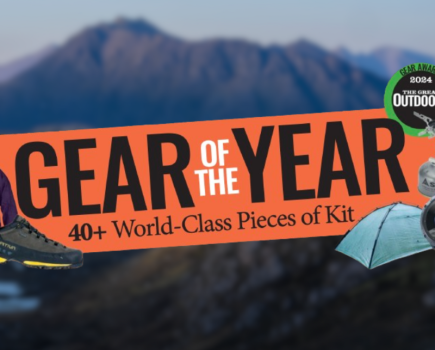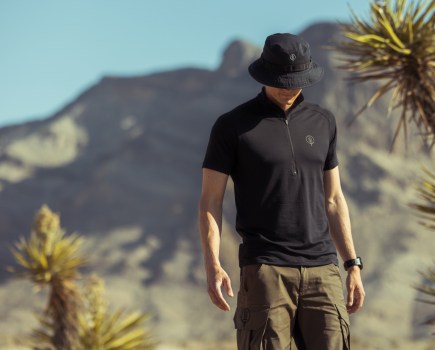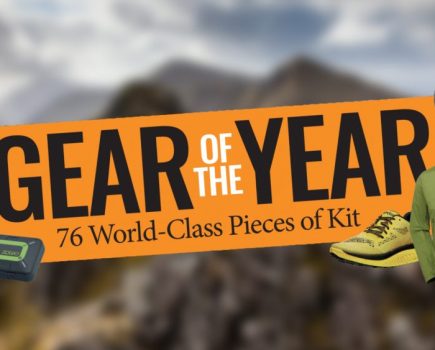Alex Roddie tests out an ultralight ice axe in the Alps
This is Grivel’s lightest ice axe with a steel pick, aimed at ski mountaineers and ultralight backpackers. Starting at only 264g (48cm version), it’s seriously light – yet its carbon steel pick makes it usable in a wider range of mountain scenarios than competing products made entirely from aluminium. Grivel have 200 years of experience building winter hardware for climbers and hillwalkers.
First impressions
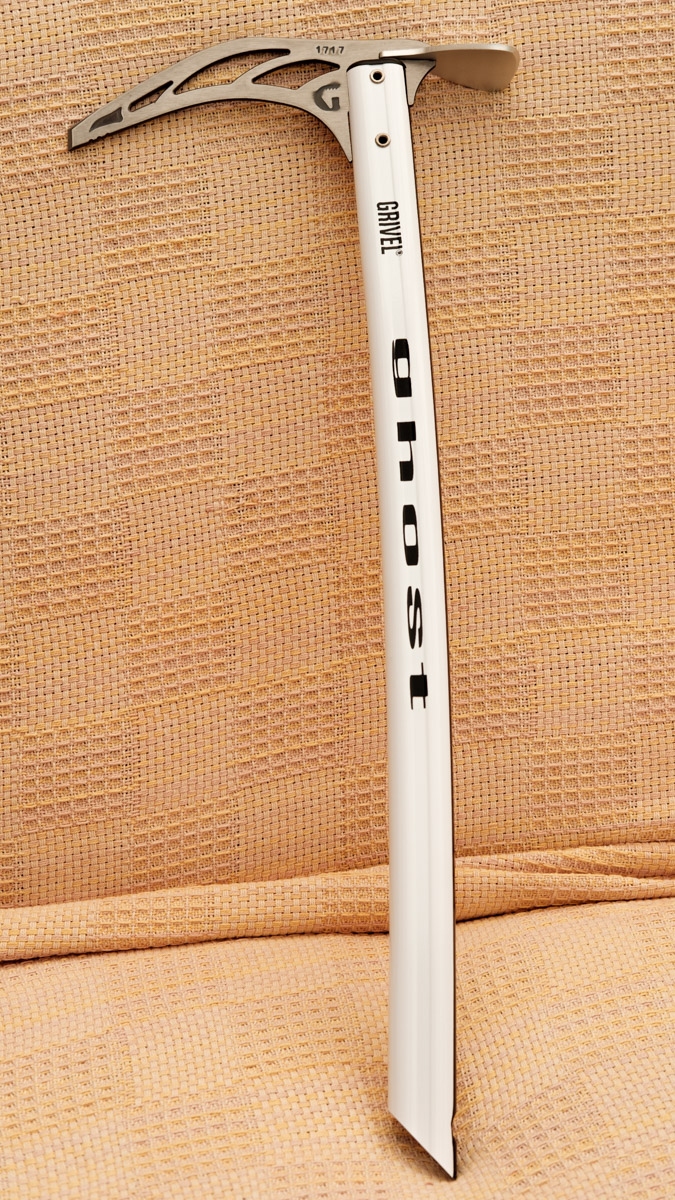 The Ghost is available in two lengths: 48cm and 53cm. I opted for the 53cm model, which weighs 287g on my scales. The shaft is Grivel’s curved ‘SA’ (Self Arrest) type, which features a gentle curve along its entire length, said to improve efficiency of self arrest. It isn’t quite the same as the tighter curve closer to the head found in some of Grivel’s more technical axes, but it has much the same effect: it helps you apply more force and control to the pick during self arrest, and protects your knuckles slightly when swinging the axe overhead. There is no grip on the shaft and it feels quite slippery in the hand. No leash is included.
The Ghost is available in two lengths: 48cm and 53cm. I opted for the 53cm model, which weighs 287g on my scales. The shaft is Grivel’s curved ‘SA’ (Self Arrest) type, which features a gentle curve along its entire length, said to improve efficiency of self arrest. It isn’t quite the same as the tighter curve closer to the head found in some of Grivel’s more technical axes, but it has much the same effect: it helps you apply more force and control to the pick during self arrest, and protects your knuckles slightly when swinging the axe overhead. There is no grip on the shaft and it feels quite slippery in the hand. No leash is included.
The shaft does not have a fitted spike of any kind; it’s simply sliced off at an angle. The shaft is plugged close to the end, to stop it from filling with snow.
What about the pick? It’s a ‘classical positive’ design: Grivel parlance for a basic curved pick, less aggressive than the banana picks you’ll find on more technical tools. The pick has a sharp chisel point, but no teeth – only three tiny notches close to the tip. This makes the axe very comfortable to hold, but I had concerns about performance on snow and ice.
The adze is very basic. It’s a tiny alloy adze welded to the steel head, and again I had doubts about performance. Would it be good enough for cutting steps?
On the hill
I took the Ghost on a late-summer trip to the Alps. My objective: the 3,532m summit of Stockhorn, which features a short glacier crossing near the summit. An ultralight ice axe is ideal for a goal of this kind, where it will only see a short period of light use, staying in the pack the rest of the time.
The weight really can’t be faulted – I did not notice it when it was being carried. However, I did notice the sharp pick, which snagged on straps and other items. It could do with a pick protector to prevent it from damaging other items.
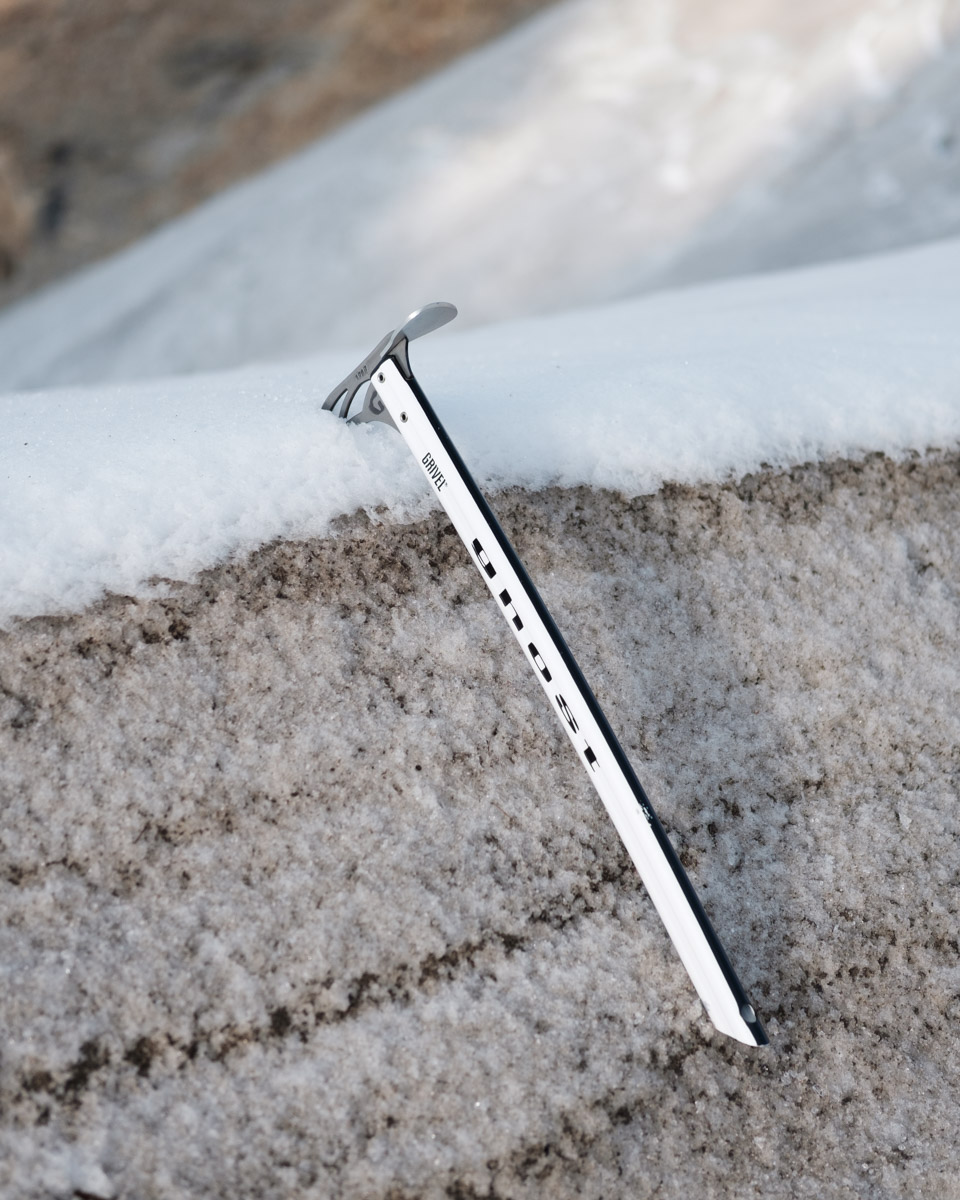 In use, I found it very comfortable to hold in self-arrest position, with the pick facing backwards. It’s also comfortable holding in piolet canne (pick facing forwards, ready to be thrust into a snow slope). The small adze makes a stable platform for the heel of the palm. I was a little surprised to note that the cut-off ‘spike’ was very efficient and held well in the firm snow of the glacier. Although snow filled the end of the shaft, the foam plug was effective at ejecting it again.
In use, I found it very comfortable to hold in self-arrest position, with the pick facing backwards. It’s also comfortable holding in piolet canne (pick facing forwards, ready to be thrust into a snow slope). The small adze makes a stable platform for the heel of the palm. I was a little surprised to note that the cut-off ‘spike’ was very efficient and held well in the firm snow of the glacier. Although snow filled the end of the shaft, the foam plug was effective at ejecting it again.
I practised self arrest a couple of times, and it worked very well for this task. The lack of aggressive teeth under the pick prevented it from feeling at all ‘grabby’. Overall it was very smooth at self arrest. This is one of the most important functions of any ice axe, so plus one point to the Ghost.
When used for traction – swung overhead or with pick plunged into the snow at waist height – the Ghost didn’t perform as well. Despite that sharp chisel point, the axe didn’t penetrate hard ice well due to its light weight, and the almost complete lack of teeth made placements feel insecure (it is, however, very easy to remove the axe from the ice after a placement). The lack of grip or leash made it difficult to hold on to in steeper situations. It’s ok in a pinch but I wouldn’t want to climb long sections of steeper snow or ice with this axe.
As expected, the alloy adze could be better for step cutting, although it does get the job done. The Ghost is capable of cutting the odd step across short icy patches, but it won’t hold up to extensive step cutting. A wider adze with sharper corners would perform better here.
Conclusion
This is not a general-purpose ice axe: it’s a specialised tool. If you want an axe for sustained hard use, or one that can get you up steeper slopes, look elsewhere. However, if you are looking for a basic tool for weight-critical but non-technical situations – ski mountaineering, or ultralight backpacking – then the Ghost is highly competent, albeit not quite best in class.
While its steel pick will ensure long-term durability, its capabilities on steeper terrain are hampered by lack of teeth and grip/leash, and the poor adze makes it unsuitable for anything more than occasional step cutting. The unprotected cut-off shaft will wear much more quickly than a steel spike or insert.
On the other hand, the Ghost is excellent at self arrest, very comfortable to hold, and will provide an essential safety margin in many backpacking or mountaineering scenarios with minimal weight penalty. It is far more competent, and will prove far more durable, than slightly lighter all-aluminium ice axes on the market. There are, however, more technical ice axes available from other brands with only a slight weight penalty (or other trade-offs) – some with a steel adze or better grip. It’s worth pointing out that adding an aftermarket leash or grip will boost the Ghost’s performance on steep ground or for sustained step cutting.
If you are looking for an ultralight ice axe for basic use, and don’t intend to push its capabilities on more technical ground, then the Ghost is a good buy.
£85





